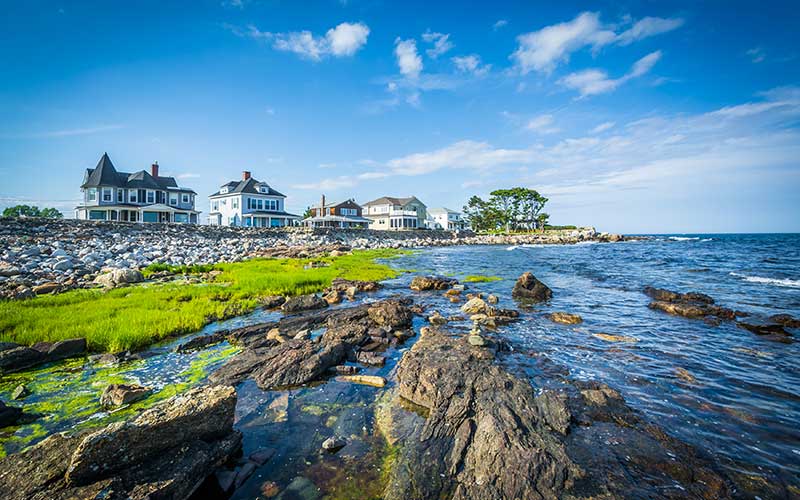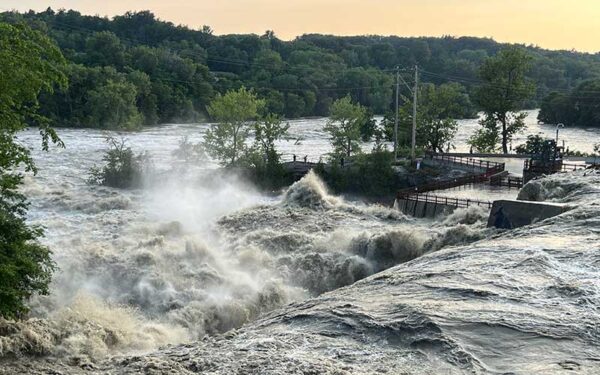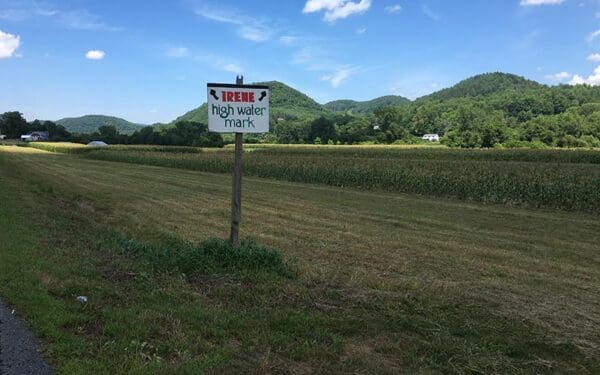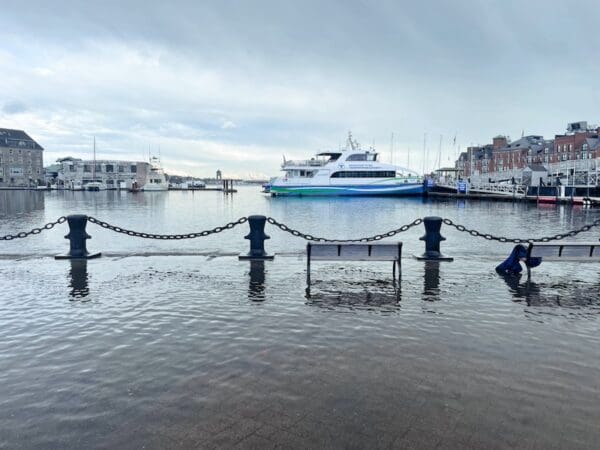
New Hampshire communities such as Rye are taking the risks posed by climate change seriously. Photo: ©Jon Bilous via Shutterstock
In the face of climate change and rising sea levels, just how resilient are our coastlines? Here in New Hampshire, state and town officials have been taking the uncertain future seriously. Vision and planning was the cornerstone of the New Hampshire Coastal Risks and Hazards Commission, which recently issued its final report. Coastal communities are already acting on the report’s recommendations.
New Hampshire Towns Take Action
Rye and Seabrook have drafted adaptation master plan chapters, and Dover is planning to create one as well. Durham is working on a floodplain overlay and is incorporating sea level rise in its living shoreline design at Wagon Hill Farm, a popular recreational property. Madbury doesn’t allow new development in special flood hazard areas and has adopted a one-foot, freeboard requirement (a practice of elevating a building’s lowest floor above predicted flood elevations by an additional height).
Hampton is also working on a freeboard regulation, while Dover has adopted a two-foot standard and is incorporating sea level rise into its Cocheco River waterfront plans. Rye and Hampton are applying to be part of the Federal Emergency Management Agency (FEMA) Community Rating System. Regional planning commissions – Rockingham and Strafford – are continuing to work with New Hampshire communities around Great Bay.
Planning for an Uncertain Future
Much of the work ahead is obvious: Elevating existing infrastructure like roads and sewage treatment plant pump stations, for example, and choosing not to construct new infrastructure in places that will be inundated by future sea level rise and storm surge.
Other changes are not so obvious – like where to allow future residential development. A property may be well-suited for development today, but the same location may be completely inappropriate ten years from now. Septic systems, for one, require a certain elevation above the groundwater level to function properly. A rise in sea level will diminish the required elevation and compromise operation of the system.
CLF has developed an important analysis that compares and analyzes if, and how, each New England state is addressing the issue of climate change impacts on residential septic systems. The paper identifies common problem areas in septic system regulation, and suggests recommendations and best practices for how states and municipalities can work to change laws, amend rules, or adopt new policies or incentives to better construct, manage, and regulate septic systems to be resilient to climate change.
It is a call to action, imploring state and local municipal leaders to review their regulatory frameworks for septic systems and ensure that they adequately account for the rising groundwater, warmer temperatures, and heavier rainstorms we anticipate in the near future.
Climate Resilience Isn’t Just for Coastal Towns
More frequent and intense storm events will overwhelm some roads, bridges, and culverts – and parts of our entire stormwater management system. A culvert that can only handle today’s average volume of water will prove inadequate in the future.
In some cases, that is already happening. Forward thinking towns are paying attention to this reality – and that includes towns everywhere, not just those along the coast. It makes no economic sense to size a culvert or bridge to handle today’s average volume of water when the future volume is predicted to be so much greater.
The Natural World is Feeling the Heat, Too
Plant and animal habitats on land and in water will also be impacted and must not be an afterthought. They provide essential services: flood protection, water filtration, carbon sequestration, and the production of oxygen. As waters rise, the current natural ecosystems will be hemmed in. For example, where will the salt marshes migrate? Essential both ecologically and for flood protection, the salt marshes will have nowhere to go unless we reserve some open-space now.
Sometime at high tide, go to the ocean’s edge and imagine the water – not at your feet – but at eye level, and take in the 360-degree view. That imagined sea level height may prove to be what is in store for our kids and grandchildren. We cannot totally reverse the changes that are coming, but we are not powerless in the face of them, either. By beginning now, we can plan for climate impacts and ensure that our communities remain vibrant and resilient, today and for future generations.



